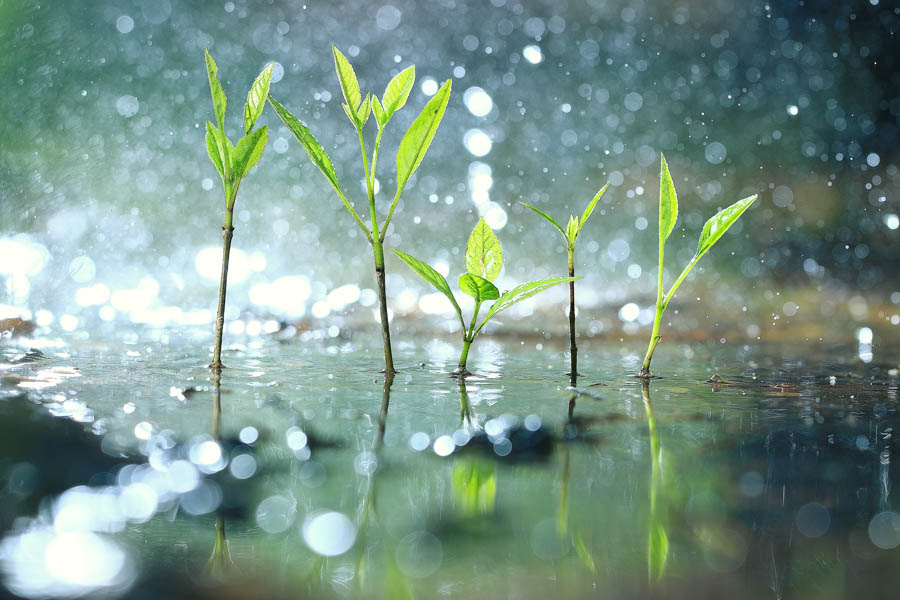California Gardening During Rainstorms: Flush Salts and Avoid Soil Compaction

Part 2 in the GardenZeus series “Gardening Tips for Rain and Rainstorms”
Have you ever seen brown or burned leaf tips or edges on your landscape plants or houseplants? This is usually caused by excessive salts in your pots or soil. Salts are minerals that are soluble in water, many of which plants need in small amounts or to varying degrees but which become toxic in larger amounts, killing portions of leaves or even entire plants by interfering with water absorption.
Salts build up naturally as a result of minerals in irrigation water. Most cities add minerals to municipal water to alkalize the water and protect plumbing infrastructure. When you water outdoors with sprinklers or a hose, or indoors with water from household faucets, some of that water evaporates and leaves minerals behind in the soil. Salts may also become problematic in soil from other common sources such as pet urine, detergents in graywater, or overfertilization.
After a long summer without rain, minerals may build up to the point in soil that they begin to cause problems for plants. This can reach the point of seriously harming or killing landscape or garden plants after several months to a few years in irrigated areas with low rainfall, or anywhere that pets urinate regularly.
Heavy rains naturally flush salts deeper into soil. While you should be flushing salts from potted houseplants every 4 to 8 weeks throughout the year to prevent salt burn, and most potted plants outdoors every 6 to 12 weeks during dry weather, rainstorms provide an opportunity to flush all of your potted plants with minimal effort. Bring out potted perennials, flowers, shrubs, and trees from under eaves or other cover and to give them a solid flushing during rainstorms. A light rain is not sufficient to flush salts; soil in pots should be saturated, with rainwater passing through the entire pot and draining out the bottom for at least an hour or two. Many houseplants won’t mind winter storms, but be careful during cold rainstorms with tropicals that may be harmed by temperatures in the 30s to 50s.
Rain lubricates soil. It lessens friction between soil particles. This may allow for easier digging, but also has other effects, including making it more likely that plants or trees may fail as roots or root plates pull out of soil, and it makes soil highly prone to compaction. By stepping on damp soil, especially soils containing clay, you compress soil particles to a greater extent than when you step on dry soil. Repeated compaction from foot traffic and other sources, including the rain itself, over time can result in the cement-like clay soils that are common throughout California. Soil compaction from normal foot traffic or pets walking on damp soil can be deadly to plants.
The best thing you can do during rainstorms or when soils are wet may be to stay out of the garden! Avoid foot traffic and keep people and pets away from cultivated areas when soil is wet. Designate mulched pathways or put stepping stones into place to prevent compaction near plants and trees. If you must step into cultivated areas with wet soil or during rainstorms, be sure to mulch thoroughly before doing so. Use digging boards, such as sections of plywood, to spread your weight and minimize compaction from standing or kneeling when working on wet soil.
See the other articles in this series:
Part 1: Preparing for Rain in California Gardens
Part 3: Benefits of Rain For California Gardens
Part 4: California Gardening After the Storm: What to do When the Sun Comes Out